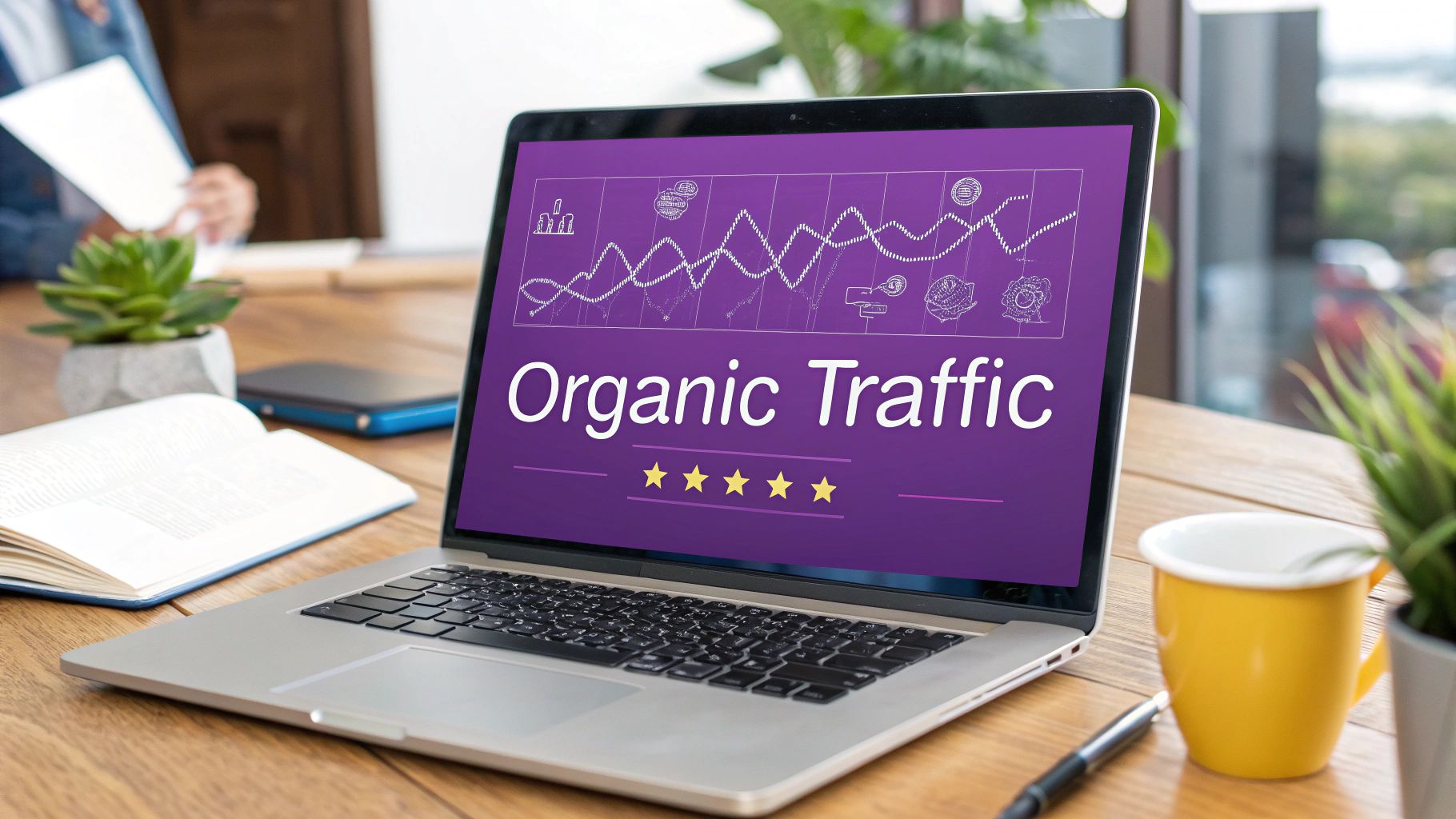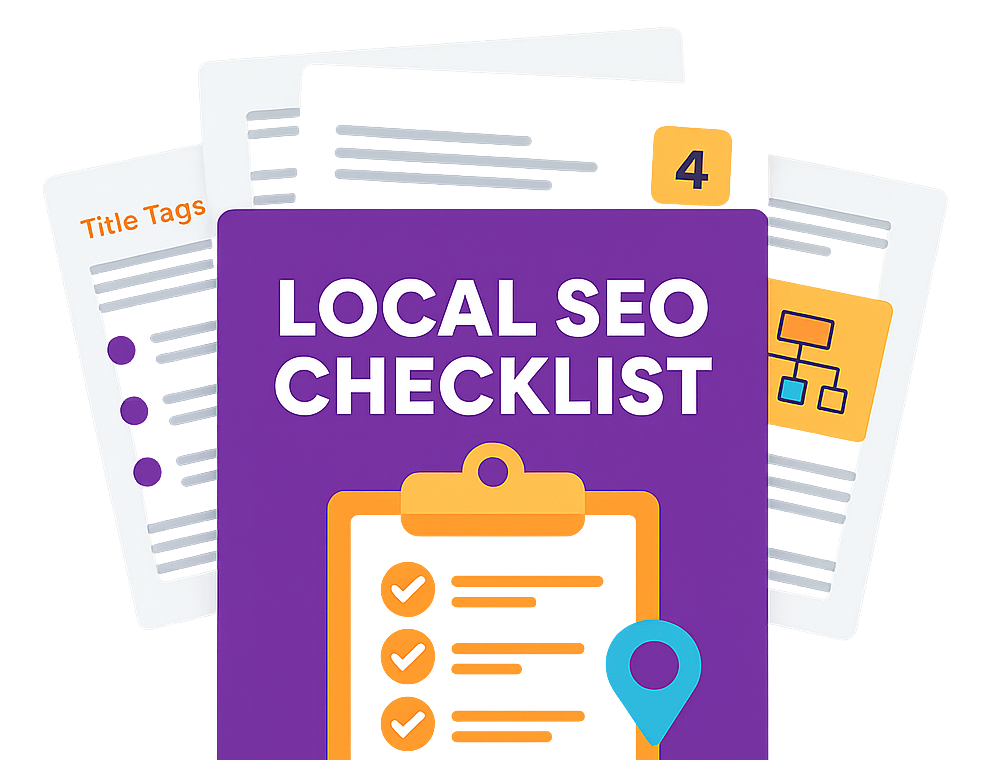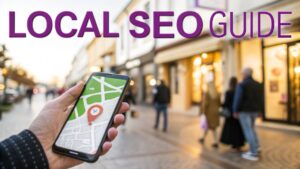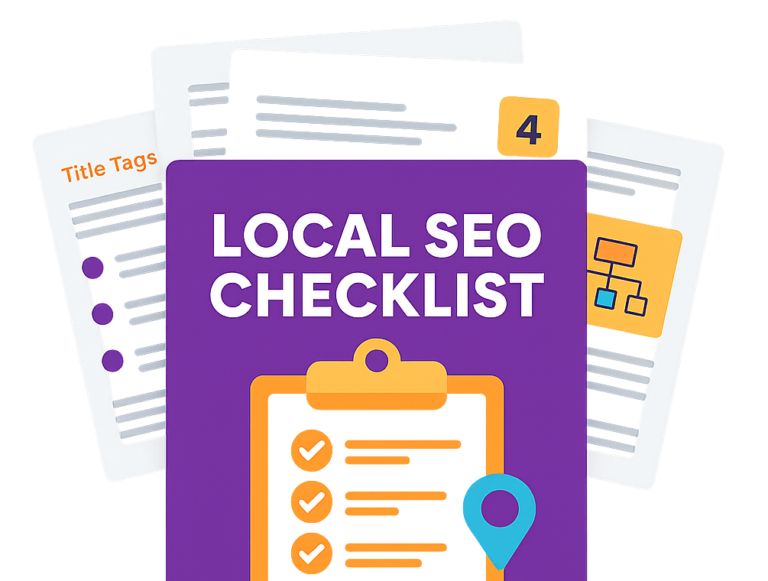If you're looking to grow your organic search traffic, you need a plan. It's not about stumbling upon a silver bullet or a secret hack; it's about methodically executing a strategy that covers all the bases. This means creating content people actually want to read, making sure your site is technically sound, building your site's authority, and giving users a great experience when they arrive.
Think of it as a flywheel. Each component feeds the next, creating momentum that leads to real, sustainable growth.
A 5-Pillar Blueprint for Driving Organic Search Traffic
So, where do you start? The entire process hinges on one fundamental activity: understanding what your audience is searching for. Without solid keyword research, you're just guessing.

This is the bedrock of any successful SEO campaign. Once you know the language your customers are using, you can build a strategy around it. Everything from the content you create to the way you structure your website flows from this initial insight.
To give you a clearer picture of how these elements come together, I've broken down the strategy into five core pillars. Mastering these is what separates sites that languish on page ten from those that dominate the top of the search results.
This guide is built around these five pillars, which together form a comprehensive roadmap for boosting your organic visibility. Think of it as a high-level summary of the game plan we're about to dive into.
The Five Pillars of Organic Traffic Growth
| Pillar | Primary Goal | Key Action |
|---|---|---|
| Technical SEO | Ensure search engines can crawl, index, and understand your website flawlessly. | Auditing site speed, mobile-friendliness, and crawlability. |
| Content Strategy | Create high-quality, relevant content that answers user questions and ranks well. | Performing keyword research and building topic clusters. |
| On-Page SEO | Optimise individual pages to signal their relevance to search engines and users. | Crafting meta titles, using headers, and internal linking. |
| Off-Page SEO | Build authority and trust by earning high-quality backlinks from other websites. | Conducting outreach and digital PR campaigns. |
| User Experience (UX) | Keep visitors engaged and encourage them to convert by providing an intuitive site. | Improving site navigation and ensuring content is readable. |
Each pillar plays a distinct but interconnected role in your overall success. You can't just build amazing links to a slow, confusing website and expect great results. It all works together.
The core principle is simple: a website that provides genuine value to users and is technically flawless is one that search engines are eager to recommend. Mastering these components will put you on the path to significant and lasting organic growth.
Mastering Content That Resonates and Ranks
Let’s be honest: generic, surface-level content just doesn’t cut it anymore. If you want to see your organic search traffic climb, you need to create genuinely helpful resources that get to the heart of what your UK audience is actually searching for. This isn't just about stuffing keywords onto a page; it's about deeply understanding what a searcher is trying to achieve.
The real magic happens when you uncover what your audience truly wants. This starts with keyword research, of course, but the focus has to be on digging for those long-tail opportunities. These longer, more specific search phrases are gold because they often reveal exactly what a person is looking for.
Think about it. Instead of just chasing a broad term like "SEO services," a far smarter approach is to explore queries like "affordable SEO services for small businesses in Cambridgeshire." That single phrase tells you the user has a specific need, a budget in mind, a location, and is much closer to making a decision.
Uncovering User Intent with Keyword Research
Good keyword research isn't a hunt for the highest search volumes. It's more like mapping out your customer's entire journey by paying attention to the questions they ask along the way. I find it helpful to think about organising content around topics, not just isolated keywords.
- Informational Intent: Someone is just starting their search, looking for answers. They might type in "how does local SEO work" or "what are backlinks." Your job here is to be the teacher with clear, educational content.
- Navigational Intent: They know who you are and are trying to find you, searching for something like "Bare Digital blog." Easy win.
- Commercial Investigation: Now they're weighing their options. Searches like "best SEO agency Cambridgeshire" or "Bare Digital vs competitor" show they're comparing solutions.
- Transactional Intent: This is the money stage. Keywords like "hire SEO expert UK" or "free SEO health check" signal someone who is ready to take action.
By creating content that serves each of these stages, you build a complete funnel that meets potential customers wherever they are in their journey. This is a foundational part of any serious content plan. To get a better handle on this, you should check out our guide on how to create a content strategy.
Structuring Content for Readability and Rankings
Once you know what you're writing about, how you present it is just as important—for both people and search engines. A well-structured article is simply easier to read, and it makes it a breeze for Google to understand. The aim is always to make your content scannable, letting readers find what they need in seconds.
This means using clear headings (H2s, H3s), keeping paragraphs short, and breaking up text with things like bullet points or images. A logical flow helps search engines pinpoint the main themes of your page, which directly impacts its ability to rank for the right searches.
Key Takeaway: Your on-page optimisation is how you communicate with search engines. A compelling title tag and meta description are your first—and sometimes only—chance to win a click from the search results.
Below is a perfect example of a Search Engine Results Page (SERP), showing exactly where your title and description appear to the user.
Think of these elements as your digital billboard. Crafting them to be irresistible and hyper-relevant to the search query is absolutely vital for pulling in that traffic.
The Power of Long-Form, Authoritative Content
When it comes to boosting organic traffic, depth is everything. Short, thin articles just don’t provide the comprehensive value that users and search engines have come to expect. Google’s algorithms are specifically designed to reward content that demonstrates Expertise, Experience, Authoritativeness, and Trustworthiness (E-E-A-T).
And what’s the best way to showcase all that? Long-form content.
By covering a topic from every possible angle, you establish your website as a go-to authority. Not only does this do a better job of satisfying the user, but it also delivers tangible SEO benefits that you can't ignore.
Research has consistently shown a strong link between content length and search performance. In the UK, for instance, data suggests that content over 3,000 words can pull in three times more traffic than shorter posts. This kind of in-depth content also tends to earn far more social shares and backlinks—both powerful signals to Google. And given that around 75% of UK users never even click past the first page of results, you have to do what it takes to get to the top.
Creating this sort of cornerstone content is a serious investment, no doubt about it. But the payoff is huge. It becomes the foundation of your topical authority, helping lift the rankings of all related pages on your site. This isn't about hitting a word count; it's about committing to providing more value than anyone else on the web.
Conducting a Powerful Technical SEO Audit
Even the most brilliant content strategy will fall flat if your website's technical foundation is shaky. Think of it like a house: no matter how beautiful the decor is, if the foundations are cracked, you've got serious problems. A technical SEO audit is your essential inspection, making sure search engines can find, crawl, and understand your content without any hitches.
This process doesn't have to be some overwhelmingly complex beast. The real goal is to spot and fix the issues that act as roadblocks for search engines and, just as importantly, create a frustrating experience for your users. By getting these fundamentals right, you give your content the best possible chance to actually rank and bring in organic traffic.

You can tackle many of the most critical checks with free tools, and your first port of call should always be Google Search Console. It gives you a direct line to what Google thinks about your site's health, flagging errors that need your immediate attention.
Prioritising Site Speed and Mobile Experience
In an always-on world, patience is thin. Site speed isn’t a nice-to-have anymore; it’s a non-negotiable ranking factor. A slow-loading website doesn't just frustrate users—it sends a huge negative signal to search engines. Studies have shown that even a one-second delay in page load time can cause a massive drop in conversions.
Mobile-friendliness is just as crucial. With a huge chunk of searches happening on phones, Google now uses the mobile version of your site for indexing and ranking. This is called mobile-first indexing. If your site isn't a dream to use on a smartphone, your organic visibility is going to suffer. It's that simple.
To get some quick wins, I always tell people to focus on these areas first:
- Image Optimisation: Get your images compressed without turning them into a blurry mess. Huge image files are probably the most common reason I see for slow page loads.
- Responsive Design: Your website has to automatically adjust its layout to fit any screen, from a big desktop monitor right down to a small phone. No exceptions.
- Minimise Code: Bloated CSS and JavaScript files can really slow things down. Cleaning this up can dramatically speed up how quickly your pages appear for visitors.
Resolving Crawlability and Indexation Issues
If search engines can't crawl and index your site properly, your pages might as well be invisible. Crawlability is all about a search engine's ability to access and explore your content. Indexation is the next step, where it adds that content to its massive database so it can be shown in search results.
Common gremlins that mess this up include broken links (404 errors), dodgy redirects, and duplicate content. Again, Google Search Console is your best friend here. Its "Coverage" report will tell you exactly which pages are having trouble being indexed and, crucially, why.
A clean, logical site structure isn't just for show. It helps users find what they need, and it makes it much easier for search engine bots to discover and understand how all your pages relate to each other. A well-organised site simply gets crawled more efficiently.
For a deeper dive, our technical SEO audit checklist provides 15 essential elements you won't want to miss. It’s a practical guide that makes sure you cover all your bases.
Implementing Structured Data for Richer Results
Finally, one of the most powerful tools in your technical SEO arsenal is structured data, which you'll often hear called Schema markup. This is basically a special vocabulary of code you add to your website to explicitly tell search engines what your content is about.
For instance, you can use it to label things like:
- An article's author and publication date
- A product's price and review rating
- An event's date, time, and location
- A recipe's cooking time and ingredients
By providing this extra layer of clarity, you're spoon-feeding search engines the exact information they need. In return, they can reward your pages with rich snippets in the search results—those eye-catching extras like star ratings, FAQs, and event details.
These enhanced listings can seriously improve your click-through rate, drawing more organic traffic even if your ranking position stays the same. Implementing schema sends a clear signal that you’re providing high-quality, well-organised information that deserves to stand out.
Building Authority with Strategic Backlink Acquisition
While creating superb content is fundamental, it's only half the battle. If you want to really ramp up your organic search traffic, you need to show search engines that your website is a credible authority. In the world of SEO, the most powerful way to do this is by getting high-quality backlinks from other reputable websites.
Think of each backlink as a vote of confidence. When another site links to yours, it’s basically vouching for your content and telling search engines, "Hey, this is a valuable resource worth paying attention to." But the game has changed dramatically; forget about old-school tactics that were all about quantity. Today, it’s all about earning quality links that are contextually relevant.

This modern approach centres on building genuine relationships and creating assets that people naturally want to share. It's about earning your authority, not trying to game the system.
Creating Genuinely Link-Worthy Assets
By far, the most sustainable way to attract backlinks is to create something so valuable that other websites feel compelled to link to it. This means going beyond your standard blog posts and developing resources that serve a unique purpose for your audience.
Here are a few ideas for creating these "link magnets":
- Original Research and Data Studies: Run a survey within your industry and publish the findings. Journalists and bloggers love citing fresh statistics, which can land you some brilliant high-authority links.
- Comprehensive 'Ultimate' Guides: Set out to develop the single best resource on a specific topic. If your guide is the most detailed and helpful one out there, it will naturally become the go-to reference for others writing about that subject.
- Free Tools and Calculators: A simple, genuinely useful tool—like a mortgage calculator for a property site or a calorie counter for a fitness blog—can attract an incredible number of links over time without any extra effort.
The common thread here is value. By providing something that can't be easily found elsewhere, you give other creators a powerful reason to link back to your site.
Leveraging Guest Posting and Digital PR
Once you've got amazing content, you need to get it in front of the right people. Proactive outreach is essential for speeding up your link-building efforts. Guest posting on relevant, high-authority blogs within your niche is a classic and still very effective method. It not only secures a valuable backlink but also exposes your brand to a new, targeted audience.
Digital PR takes this a step further. It involves promoting your best assets—like that original research we just talked about—to journalists, editors, and industry publications. A single mention in a major online publication can send a huge signal of authority to search engines. For a more detailed walkthrough, our guide offers specific tips on https://www.bare-digital.com/how-to-build-backlinks/ that deliver real results.
Don't just focus on the big names. Earning a link from a respected, niche-specific blog can often be more valuable than a link from a generic, high-domain-authority site because it signals strong topical relevance.
Analysing Competitor Backlink Profiles
Why reinvent the wheel? A crucial part of any link-building strategy is analysing where your top competitors are getting their links from. This process, often called a backlink gap analysis, can uncover a goldmine of opportunities.
By using SEO tools to inspect their backlink profiles, you can identify the high-quality sites that are already linking to content similar to yours. This gives you a ready-made list of outreach targets who have a proven history of linking within your industry. Look for patterns: do they get a lot of links from industry round-ups, resource pages, or guest posts? This intelligence allows you to replicate their successes and even spot opportunities they might have missed.
The investment in earning these authoritative links pays off significantly. In the UK, SEO delivers an astonishing average return of £22 for every £1 invested, making it arguably the most cost-effective marketing channel. This return is amplified because organic leads convert 84.62% more than those from paid search, with some B2B sectors seeing an ROI as high as 702%.
Improve User Experience, Improve Your Rankings
Google's mission has always been pretty straightforward: give people the best possible answers to their questions. That means your website's user experience (UX) isn't just a nice-to-have anymore; it's a fundamental part of modern SEO and plays a huge role in how to increase organic search traffic.
Think about it from Google's perspective. When someone clicks on your site and finds exactly what they need without any hassle, they stick around. They click, they read, they engage. These are all powerful signals that tell Google you're a quality result. But if your site is slow, confusing, or just plain awkward to use, they'll hit the back button in seconds. That's what we call "pogo-sticking," and it's a red flag for search engines.
The Foundations of a User-Friendly Website
You don't need to tear down your entire website and start from scratch. Nailing the user experience often comes down to getting a few key things right. The goal is to remove any and all friction stopping someone from finding what they came for.
Here are three areas where you can get some quick wins:
- Effortless Site Navigation: Can a first-time visitor find your contact page or your main services in a couple of clicks? Your menus and internal links should be so logical that people don't even have to think about them.
- Blazing-Fast Page Speed: We've all been there. Waiting for a page to load is painful. In an online world, patience is a rare commodity. A slow site is a one-way ticket to losing a visitor for good.
- Clean and Scannable Design: No one wants to read a wall of text. Make your content inviting by using clear headings, short paragraphs, plenty of white space, and a font that’s easy on the eyes.
If you're noticing a lot of people landing on a page and leaving right away, that's a classic sign of a UX problem. We've got a whole guide on how to diagnose and fix this, which you can read here: how to reduce bounce rate.
Getting to Grips with Core Web Vitals
To give us a clearer, data-driven way to measure user experience, Google rolled out the Core Web Vitals. These are specific, technical metrics that look at how your site performs in the real world, focusing on loading speed, interactivity, and visual stability.
Essentially, they're Google's way of putting a number on how user-friendly your site is from a technical standpoint. Here are the three you need to know:
| Metric | What It Actually Measures | What to Aim For |
|---|---|---|
| Largest Contentful Paint (LCP) | The time it takes for the biggest piece of content (like an image or text block) to appear on the screen. | Keep it under 2.5 seconds. |
| Interaction to Next Paint (INP) | How long it takes for your page to respond when someone clicks a button, taps a link, or interacts with something. | A good score is below 200 milliseconds. |
| Cumulative Layout Shift (CLS) | Whether your page elements jump around as it loads. It's all about visual stability. | You want a score of 0.1 or less. |
These aren't just abstract figures. A bad CLS score is that infuriating moment when you go to tap a button, and an ad loads at the last second, shifting the whole page and making you click the ad instead. We've all been there, and it's a terrible experience.
You can easily check your scores using Google's own PageSpeed Insights tool. Getting these numbers in the green often involves some behind-the-scenes work like optimising your images, cleaning up code, or changing how scripts load. But the takeaway is simple: when you build a better experience for people, you're also building a site that search engines want to reward.
Right, you've done the hard work – the audits, the content, the outreach. But how do you actually know if it's working? This is where the real magic happens: turning data into decisions.
Measuring your SEO success isn't just about patting yourself on the back for a few green arrows. It's about understanding what's driving results so you can do more of it, and identifying what's falling flat so you can fix it or move on. It's the cycle of testing, learning, and refining that separates the pros from the amateurs.
Your two best friends here are going to be Google Analytics and Google Search Console. Think of them as your direct line to understanding how real people find and use your website. Get into a regular habit of checking in, and you'll soon start spotting patterns and opportunities you would have otherwise missed.
What to Actually Keep an Eye On
It's incredibly easy to get bogged down in data. To keep things simple and actionable, focus on the metrics that truly matter to your business.
- Organic Traffic: Is it going up? Look for a steady, month-on-month climb rather than getting too excited about one-off spikes. Consistency is the name of the game.
- Keyword Rankings: Are you climbing the ladder for the keywords you care about? Keep a close watch on your most important commercial and informational search terms.
- Click-Through Rate (CTR): This tells you how compelling your shop window is. If loads of people see your site in the search results but nobody clicks, it’s a big red flag that your title tags and meta descriptions aren't cutting it.
- Organic Conversion Rate: This is the big one. How many of those search visitors are actually doing what you want them to do? Whether it’s buying a product, signing up, or filling in a form, this metric connects your SEO efforts directly to your bottom line.
Don't Get Blindsided by Market Shifts
Keeping track of your own site is only half the battle. The search world doesn't stand still, and you need to know what's happening out there.
For example, recent data on UK search habits paints an interesting picture. While Google is still the undisputed king, its total weekly visits actually dipped by around 4% between 2022 and mid-2025. Even with that dip, it was still responsible for about 90% of all UK search referrals as of May 2025.
At the same time, other players are making moves. Microsoft Bing, for instance, saw its weekly visits shoot up by more than 40% in the same timeframe. This doesn't mean you should abandon Google, but it's a stark reminder to keep your eyes open and not put all your eggs in one basket. You can dig deeper into these digital trends on WeAreSocial.com.
Key Takeaway: SEO is a living, breathing process. It's a constant loop of doing, measuring, and tweaking. Use your data to make smarter decisions, double down on your wins, and learn from your losses.
Got Questions About Organic Traffic? We've Got Answers
Diving into SEO can feel a bit like learning a new language, and it's natural for questions to pop up along the way. I've put together some straightforward answers to the queries I hear most often, designed to give you the clarity you need to boost your organic traffic.
How Long Until I Actually See SEO Results?
This is the big one, isn't it? The honest answer is that SEO is a long game. While you might spot some positive flickers in the data within a few months, you should really be thinking in terms of six to twelve months for meaningful, needle-moving results.
That timeframe gives search engines enough time to properly crawl and index your improvements, and more importantly, for your authority-building efforts to actually gain traction.
Of course, several things can speed this up or slow it down:
- Your site's history: A brand-new website is starting from scratch, whereas an established domain with some existing authority has a head start.
- The competition: Trying to rank for something like "car insurance" is a whole different ball game than "artisan dog walker in Dulwich." The more competitive your niche, the longer it will take.
- Your investment: A consistent, well-resourced SEO strategy will simply get you there faster than a sporadic one.
I'm on a Tight Budget. Where Should I Start?
If you're working with limited time or money, you have to be strategic. Forget trying to do everything at once. Instead, pour your energy into the two areas that deliver the biggest impact: technical SEO fundamentals and stellar content creation.
First, get your house in order. Make sure your site is technically solid – it needs to be fast, mobile-friendly, and free of any show-stopping crawl errors. Once that's sorted, shift your focus to creating one or two truly exceptional pieces of content. Target your most valuable keywords—the ones that are most likely to lead to a sale or enquiry.
I'd much rather see a client produce one definitive, industry-leading guide than ten mediocre blog posts. Your goal should be to create the single best resource on the internet for a specific topic. That's what earns links, satisfies visitors, and gives you the most bang for your buck. It’s always about quality over quantity.
Does Social Media Actually Help with SEO?
There's a common misconception here. Social signals like likes, shares, or follower counts don't directly influence your search engine rankings. Google has been clear about this for years. However, that doesn't mean social media is useless for SEO—far from it.
Think of social media as your content amplifier and brand-building megaphone. When you share a new article on your social channels, you drive that initial wave of traffic. Some of those visitors might be bloggers or journalists who then decide to link to your content. That's an SEO win.
A strong social presence also builds brand awareness. Over time, more people will start searching for your brand name directly in Google. These "branded searches" are a powerful signal to search engines that you're a legitimate authority in your space. So, while the link isn't direct, a smart social media strategy absolutely supports your wider SEO efforts.








